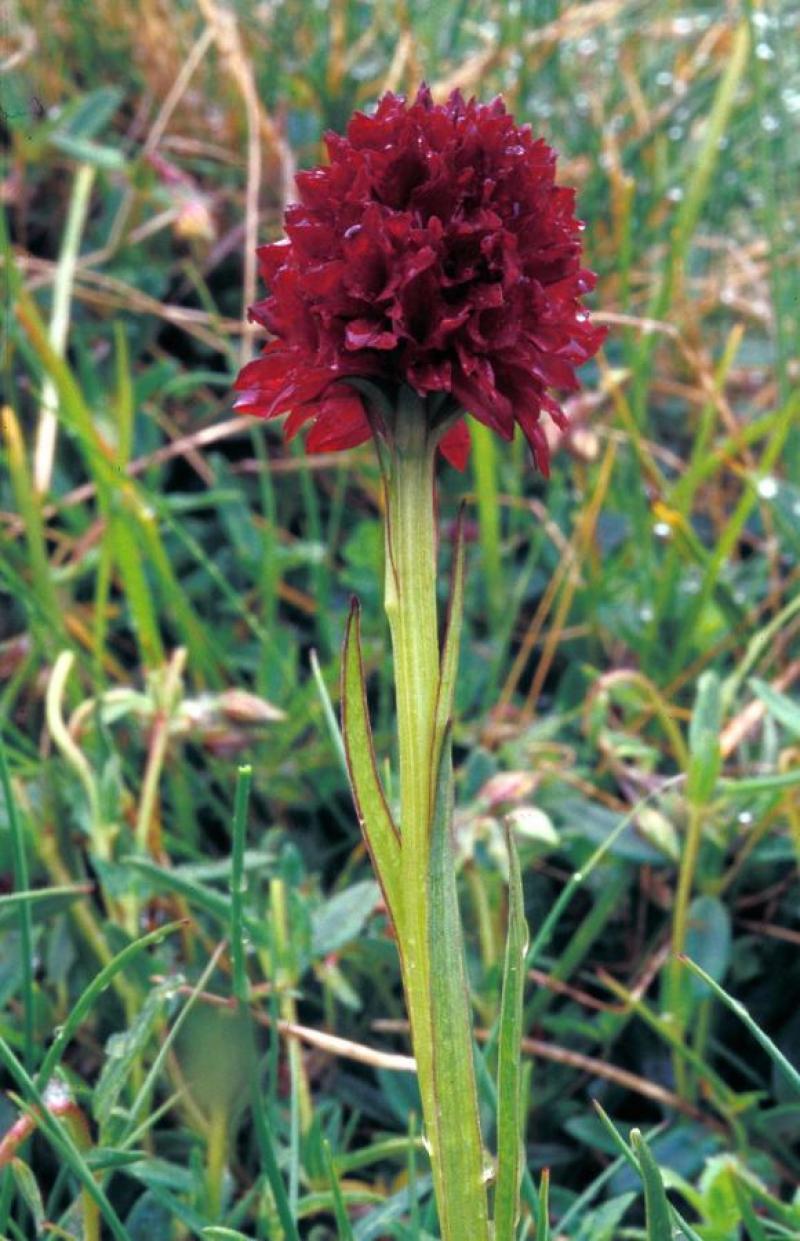Gymnadenia nigra
Also known as: The Black Gymnadenia or Satyrium nigrum Orchis atropurpurea Orchis reichenbachii Nigritella angustifolia h.v. corneliana Nigritella suaveolens var. nigroconopsea Orchis nigra var. flore-rosea Nigritella angustifolia Nigritella nigra var. fulva Gymnigritella megastachya Gymnigritella brachystachya Nigritella hybrida Nigritella megastachya Nigritella fragrans Orchis moritziana Gymnadenia nigra var. longibracteata Nigritella nigra f. longibracteata Nigritella suaveolens Nigritella brachystachya Nigritella angustifolia f. longibracteata in the subfamily: Orchidoideae
Native to: Norway Sweden
General Information
The Black Gymnadenia is a cool growing terrestrial orchid belonging to the sub family Orchidoideae native to Norway and Sweden.
Substrate(s)
- Coarse
Care Notes
These orchids live on the forest floor and keep tubers to store energy and nutrients during dormancy and poor weather. They are generally quite forgiving and usually thrive on neglect, as long as it's the type of neglect where they are forgotten to be watered or fertilised, as overwatering can cause rot, and excessive fertilisers can affect the fine root system.
They are quite forgiving when it comes to light and environmental conditions, as long as they have enough moisture in the soil to keep going. Damage to leaves from overexposure to light or dry conditions has no long term implications as the plant will withdraw back to the tuber and be replaced with a new plant in the next season. Just be sure not to overwater damaged plants as they will rot.
They will enter a dormancy phase where leaves are shedded the plant withdraws back to the ground. During dormancy tubers can be removed from the soil, kept in a dry cool place if required, replanting when new roots appear. However, most plants will do better if not disturbed, and replanting late can set back the plant and reduce the likelihood of flowering in the following year.
In many areas these can be grown in the garden, needing little maintenance.
Climate
Rainfall ranges from 56mm to 183mm per day, heaviest in July and lightest in November. Humidity ranges from 70% to 83%, highest in September and lowest in March. Temperature ranges from 6C to 31C, highest in July (24C to 31C) and lowest in January (6C to 14C).
Watering
These orchids prefer a constant supply of moisture, with a slight drying out between waterings. Saucers can be placed under pots to retain moisture during hot weather, however the saucers should be removed or let to dry every 1-2 weeks to prevent rot. Keep an eye on the plant especially in hot weather and look for cues of under/overwatering and adjust accordingly.
Fertiliser
dormant-medium-demand-orchid Use balanced fertiliser during Spring and Summer. Apply fertiliser regularly at half strength year round. Use a high Nitrogen fertiliser during Spring and Summer. Use a high Phosphorous fertiliser during Summer.
Potting
These plants can be sensitive to repotting though should not require repotting regularly. Repotting should be done when the mix has broken down to the point that it doesn't absorb water or holds onto water for far too long, usually the plant shows a decline in growth as well. Repotting is best done after the growing season when the plant has died back.
The mix should be free draining, with a blend of 30% inorganic ingredients such as coarse sand, gravel or perlite, mixed in with about 70% organic ingredients such as peat, leaf litter or decomposed bark. Avoid commercial potting mixes as they can vary wildly and may contain "wetting agents" that can hold onto water for loo long, causing rotting and stunted growth.





















